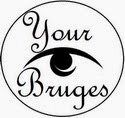It’s the
most wonderful time of the year… We know the song, we decorate everything and
give presents to our most beloved.
But, where
does Christmas come from?
With
reading an article from a good friend, and a reference to a really interesting
website I found some interesting history about this day.
Everyone
thinks December 25th is the day when Jesus was born. Sorry, no…
There were a lot of pagan gods were born on that day. From its early Babylonian roots, the
celebration of the birth or “rebirth” of the sun god on December 25th
came to be celebrated under various names all over the ancient world. It is a
fact that the winter solstice occurs a few days before December 25th.
The winter solstice is the day of the year when daylight is the shortest. So
you could say that with the rebirth of the sun god, the daylight is born as
well…
But
thousands of years before there was a “Santa Claus” there was another
supernatural figure who would supposedly visit a tree and leave gifts every
December 25th, his name was Nimrod.
Semiramis
(a women who later in history became known as the goddess
Astarte/Asherah/Ashtoreth/Isis/Ishtar/Easter in other pagan religions) claimed
that after the untimely death of her son/husband (yep, she married her own son)
Nimrod, she saw a full-grown evergreen tree spring out of the roots of a dead
tree stump, symbolizing the springing forth of new lift for Nimrod. And, on the
anniversary of his birth, she said, Nimrod would visit the evergreen tree and
leave gift under it. I can’t help but stating the obvious and say that this all
sounds so very familiar!
From this
original fable peddled by Semiramis (the “Queen of Heaven”) came the tradition
for pagans to go out to the holy “groves” and leave gifts for Nimrod (who later
came to be worshipped as “Baal”) at an evergreen tree. But, this last doesn’t
sound like a Christian holiday…
Later, in
Egypt, the son of Isis was born at the same day, at about the time of the
winter solstice. The very name by which Christmas is popularly known –Yule day-
proves at once its pagan and Babylonian origin. ‘Yule’ is the Chaldee name for
an ‘infant’ or ‘little child’, and as the 25th of December was
called by our pagan Anglo-Saxon ancestors, ‘Yule day’ or the ‘Child’s day’, and
the night that preceded it (Mother night) long before they came in contact with
Christianity, that sufficiently proves its real character.
But
“Christmas”, where is that coming from then?
The word
itself is nowhere to be found in the entire bible. In fact, the word wasn’t
even invented until about 1000 years after Jesus died.
Well, for starters, Jesus wasn’t born in December. Way too cold for shepherd to be out with their sheep at night in Israel. Bases on the Scriptures, it appears that it is most likely that Jesus was born in the fall, most likely during the “feast of Tabernacles”, the Feast of Ingathering or Sukkot, celebrated in the month of Tishrei, which varies from late September to late October.
Well, for starters, Jesus wasn’t born in December. Way too cold for shepherd to be out with their sheep at night in Israel. Bases on the Scriptures, it appears that it is most likely that Jesus was born in the fall, most likely during the “feast of Tabernacles”, the Feast of Ingathering or Sukkot, celebrated in the month of Tishrei, which varies from late September to late October.
Why
December 25th then?
When the
Roman Empire legalized Christianity in the 4th century, most of the
other religions in the empire were celebrating the birth of their gods on December
25th. One of the biggest festivals was known as Saturnalia. A
festival during which the Romans commemorated the dedication of the temple of
their god Saturn.
Saturnalia was typically characterized by gift-giving, feasting, singing and lots of debauchery. The priests of Saturn would carry wreaths of evergreen boughs in procession throughout the pagan Roman temples.
Saturnalia was typically characterized by gift-giving, feasting, singing and lots of debauchery. The priests of Saturn would carry wreaths of evergreen boughs in procession throughout the pagan Roman temples.
In 350 Pope
Julius I declared that the birth of Jesus would be celebrated on December 25th
from then on. There appears to be little doubt that Pope Julius was trying to
make it as painless as possible for pagan Romans to convert to Catholicism.
When the
Romans Catholics decided to make December 25th a “Christian holiday”
in the 4th century, they simply adopted a long standing pagan
holiday and kept most of the same pagan traditions!
In “The Two
Babylons”, Hislop describes some of these ancient traditions surrounding the
Christmas tree…
“The Christmas tree, now so common among us,
was equally common in pagan Rome and pagan Egypt. In Egypt that tree was the
palm-tree; in Rome it was the fir; the palm-tree denoting the Pagan messiah, as
Baal-Tamar, the fir referring to him as Baal-Berith. The mother of Adonis, the
sun-god and great mediatorial divinity, was mystically said to have been
changed into a tree, and when in that state to have brought forth her divine
son. If the mother was a tree, the son must have been recognized as the ‘Man
the branch.’ And this entirely accounts for the putting of the Yule Log into
the fire on Christmas Eve, and the appearance of the Christmas tree the next
morning…”
That sure
puts a different spin on Christmas traditions, now doesn’t it?






